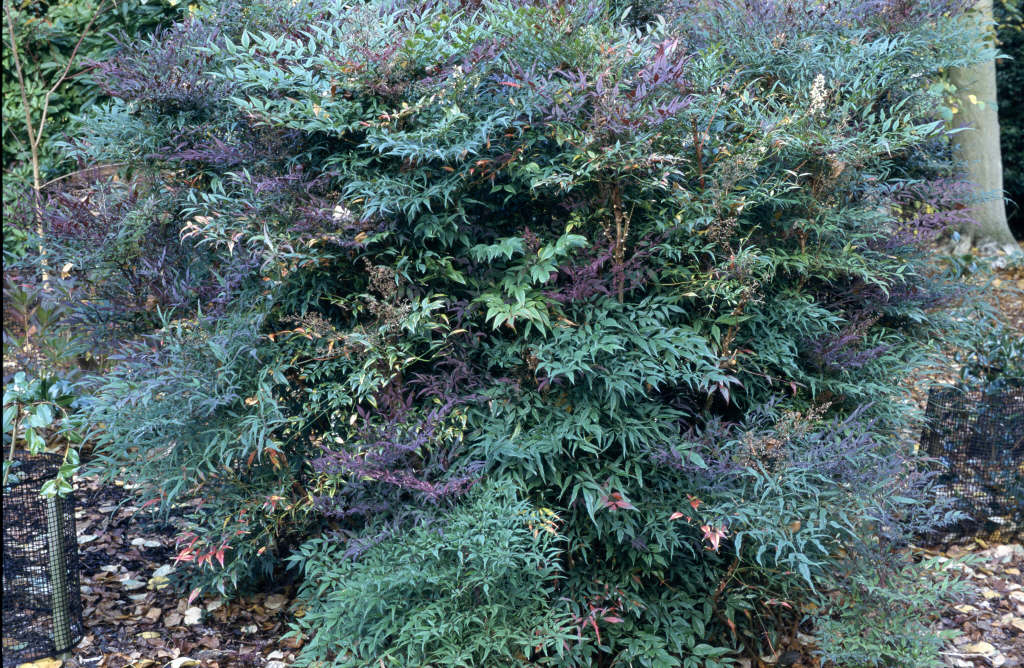Nandina domestica
heavenly bamboo
A small, upright, elegant evergreen shrub with a bamboo-like habit to around 2m in height, with compound leaves and lanceolate leaflets which are purplish when young and in winter. Small white flowers in large panicles appear in summer, followed by red berries
Size
Ultimate height
1.5–2.5 metresTime to ultimate height
10–20 yearsUltimate spread
1–1.5 metresGrowing conditions
Moisture
Moist but well–drainedpH
Acid, Alkaline, NeutralColour & scent
| Stem | Flower | Foliage | Fruit | |
| Spring | Purple | |||
|---|---|---|---|---|
| Summer | White | Green | ||
| Autumn | Green | Red | ||
| Winter | Purple |
Position
- Full sun
Aspect
East–facing or West–facing
Exposure
ShelteredDrought resistance
Yes Hardiness
H5Botanical details
- Family
- Berberidaceae
- Native to GB / Ireland
- No
- Foliage
- Evergreen
- Habit
- Bushy
- Potentially harmful
- Harmful if eaten. Wear gloves and other protective equipment when handling Pets (dogs, poultry): Harmful if eaten. For further information and contact numbers regarding pets, see the HTA guide to potentially harmful plants
- Genus
Nandina are erect, evergreen shrubs with pinnate to 3-pinnate leaves composed of lance-shaped leaflets which colour well in autumn, and panicles of small, star-shaped white flowers, followed by bright red fruits
- Name status
Correct
- Plant range
- China
How to grow
Cultivation
Grow in a moist but well-drained soil in a sheltered position in full sun
Propagation
Propagate by seed or semi-hardwood cuttings
Suggested planting locations and garden types
- City and courtyard gardens
- Cottage and informal garden
- Rock garden
- Architectural
- Low Maintenance
- Flower borders and beds
Pruning
Pests
Generally pest-free
Diseases
May be susceptible to honey fungus (rarely) and a virus
Love gardening
Sign up to receive regular gardening tips, inspiration, offers and more
View our Privacy Policy
Get involved
The Royal Horticultural Society is the UK’s leading gardening charity. We aim to enrich everyone’s life through plants, and make the UK a greener and more beautiful place.
